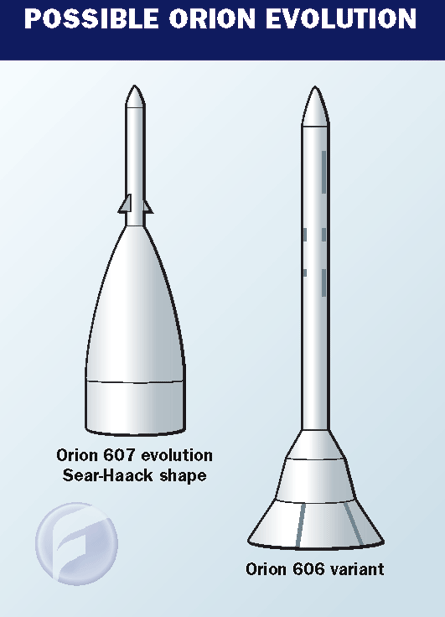Aerodynamic improvements to the launch abort system could let NASA increase the mass of its Orion crew exploration vehicle by 545kg (1,200lb). NASA and its Orion prime contractor Lockheed Martin have been conducting windtunnel tests to reduce crew module mass by altering launch abort system thrust load paths.
But the work, which took place from 22-26 January at the Boeing Polysonic Wind Tunnel, discovered that launch abort system designs reduced aerodynamic axial loading on Orion and its Ares I crew launch vehicle when they employed a "Sears-Haack shape" for the load path.
"Ascent trajectory analysis using this data indicates that the [alternate] launch abort system configuration may provide an aerodynamic benefit that could allow approximately 1,200lb [545kg] more of mass to be delivered to orbit," says a test report obtained by Flight International.
At the windtunnel 1% scale models of Ares I with its Orion payload were used and the testing examined five launch abort system designs. They were NASA's Design Analysis Cycle (DAC)-1, the Lockheed Martin 605-054 baseline configuration and three alternate Sears-Haack shape designs. These alternate launch abort systems delivered the "aerodynamic benefit".
However, NASA's published images of the 606 Orion variant does not show a Sears-Haack shape or the tower configurations used in the tests. A 607 variant may adopt the Sears-Haack configuration.
|
|---|
Above: the 606 design, unveiled after the wind tunnel testing, does not have a Sears-Haack shape, while the 607 evolution here reflects the alternate designs. |
The 1% models had detachable protuberances that included scaled reaction control systems, upper and lower system tunnels, booster separation motors and liquid hydrogen feedline fairings.
Source: Flight International

















